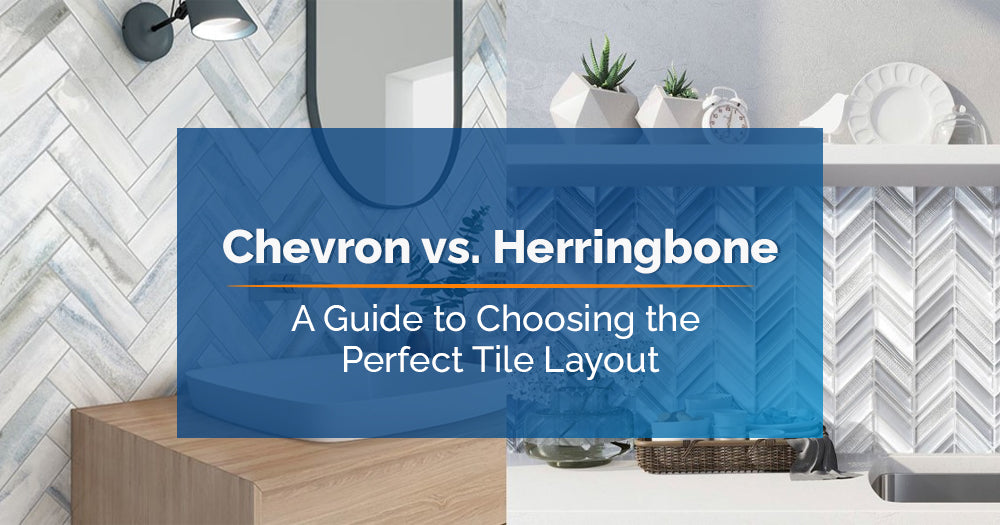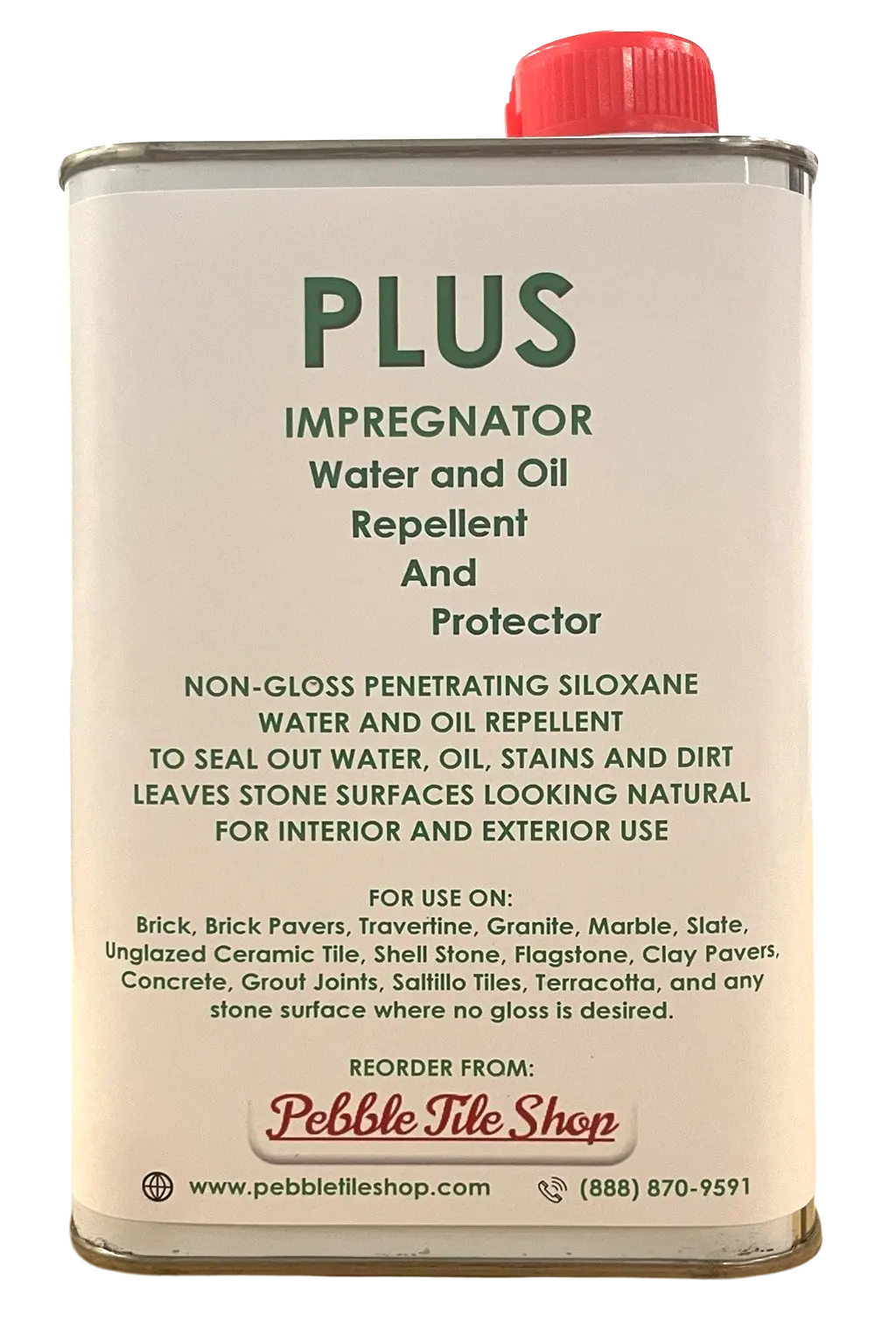Chevron vs. Herringbone: A Guide to Choosing the Perfect Tile Layout
When it comes to designing a space that exudes style and sophistication, the tile layout plays a crucial role. Two of the most popular and visually striking patterns are Chevron and Herringbone. Both layouts offer unique aesthetics that can dramatically transform a room, but they differ subtly, impacting your overall design. This comprehensive guide will explore "Chevron vs. Herringbone," helping you make an informed decision on which tile layout is perfect for your space.
Understanding Chevron and Herringbone
Before diving into the details, it's essential to understand what sets Chevron and Herringbone apart. Although they may appear similar at first glance, their differences create entirely distinct looks.
Chevron Tile Pattern
The Chevron pattern is characterized by its continuous zigzag design. Tiles are cut at an angle, typically 45 degrees, and laid end to end to form a seamless line of V-shaped points. This layout creates a sense of movement and direction, making it ideal for spaces where you want to guide the eye through the room.
Herringbone Tile Pattern
The Herringbone pattern, on the other hand, is composed of rectangular tiles arranged in a zigzag pattern without being cut at an angle. Each tile is laid perpendicular to the other, forming a series of broken zigzags or "V" shapes. This pattern adds texture and depth to a space, offering a classic and timeless look that suits various design styles.
Chevron vs. Herringbone: Key Differences
Now that we've established what Chevron and Herringbone are, let's explore the key differences between these two patterns.
Visual Impact
The most apparent difference between Chevron and Herringbone lies in their visual impact. Chevron's continuous zigzag pattern creates a clean, modern look with a strong sense of direction, perfect for emphasizing movement, such as in hallways or feature walls. Herringbone, with its broken zigzag pattern, offers a more subtle, textured appearance that works well in both traditional and contemporary settings.
Installation Complexity
When considering Chevron vs. Herringbone, it's essential to factor in the installation complexity. Chevron requires precision cutting of tiles at an angle, making it a bit more challenging and time-consuming to install. Herringbone, while still requiring attention to detail, is generally easier to install since it involves laying rectangular tiles without the need for angled cuts.
Material Waste
Another consideration in the Chevron vs. Herringbone debate is material waste. Due to the angled cuts required for the Chevron pattern, there is typically more waste compared to Herringbone. If you're working on a tight budget or have limited materials, Herringbone may be the more cost-effective option.
Design Versatility
Both Chevron and Herringbone offer design versatility but in different ways. Chevron is ideal for creating a modern, streamlined look, making it perfect for contemporary or minimalist interiors. Herringbone, with its timeless appeal, complements a wide range of design styles, from rustic and traditional to modern and eclectic.
Chevron vs. Herringbone: Where to Use Each Pattern
When choosing between Chevron and Herringbone, consider where each pattern will be most effective. Let's explore some of the best applications for each tile layout.
Chevron: Best Applications
-
Feature Walls: Chevron's bold, continuous lines make it an excellent choice for feature walls. Whether in a living room, bedroom, or bathroom, a Chevron-patterned wall can serve as a stunning focal point.
-
Hallways: The directional nature of Chevron can guide the eye along a hallway, creating a sense of flow and movement. It's ideal for long, narrow spaces where you want to add visual interest.
-
Backsplashes: A Chevron backsplash can add a touch of modern elegance in kitchens or bathrooms. The pattern's clean lines complement sleek cabinetry and fixtures, creating a cohesive look.
-
Floors: While less common, Chevron can be used on floors to create a statement. This is particularly effective in large, open spaces where the pattern can be fully appreciated.
Herringbone: Best Applications
-
Floors: Herringbone is a classic choice for flooring, offering a timeless look that works well in both traditional and modern interiors. It adds texture and interest to any space, from entryways to living rooms.
-
Bathrooms: Herringbone tiles in a bathroom can create a sense of luxury and elegance. Whether used on the floor or as a shower wall, the pattern adds depth and sophistication.
-
Kitchens: Herringbone is a versatile choice for kitchen backsplashes, pairing well with various countertop materials and cabinet styles. It can also be used on kitchen floors to create a cohesive look.
-
Accent Walls: Like Chevron, Herringbone can be used on accent walls to add texture and visual interest. The pattern's subtlety makes it a great choice for more understated, elegant designs.
Chevron vs. Herringbone: Choosing the Right Material
The material you choose for your tiles will significantly impact the final look. Both patterns can be created using various materials, including ceramic, porcelain, marble, and wood. Here's a breakdown of how different materials can enhance each pattern.
Ceramic and Porcelain Tiles
Ceramic and porcelain tiles are popular choices for both Chevron and Herringbone patterns. They are durable, easy to maintain, and come in a wide range of colors and finishes. Glossy porcelain tiles can enhance the modern look of Chevron, while matte ceramic tiles can add a subtle elegance to Herringbone patterns.
Marble Tiles
Marble tiles bring a touch of luxury to any space, making them perfect for both patterns. The natural veining in marble adds depth and movement, enhancing their visual impact. Marble Chevron tiles can create a high-end, contemporary look, while marble Herringbone tiles offer timeless sophistication.
Wood Tiles
Wood-look tiles are another excellent option for Chevron and Herringbone patterns. They provide the warmth and texture of natural wood with the durability and ease of maintenance of tile. Wood Chevron patterns are ideal for modern spaces, while wood Herringbone patterns can add rustic charm.
Chevron vs. Herringbone: Pros and Cons
To help you further in your decision-making process, let's weigh the pros and cons of each pattern.
Chevron: Pros and Cons
Pros:
- Creates a bold, modern look with strong visual impact.
- Ideal for feature walls, backsplashes, and hallways.
- Adds a sense of movement and direction to a space.
Cons:
- More complex and time-consuming to install.
- Generates more material waste due to angled cuts.
- May be too bold for more traditional or understated interiors.
Herringbone: Pros and Cons
Pros:
- Offers a timeless, versatile look that suits various design styles.
- Easier to install compared to Chevron.
- Generates less material waste.
- Adds texture and depth to floors, walls, and backsplashes.
Cons:
- May not have the same bold visual impact as Chevron.
- Can be more subtle, which may not be ideal for creating a strong focal point.
Chevron vs. Herringbone: Cost Considerations
Cost is always a factor when choosing between Chevron and Herringbone. While both patterns can vary in price depending on the material used, there are general cost considerations to keep in mind.
Chevron
Due to the precision cutting required, Chevron tiles tend to be more expensive than Herringbone tiles. The installation process is also more labor-intensive, increasing labor costs. However, the final result can be worth the investment if you're looking for a striking, modern design.
Herringbone
Herringbone tiles are generally more affordable, both in terms of material and installation costs. The pattern's versatility and timeless appeal make it a cost-effective choice for various applications. If you're on a budget but still want a stylish look, Herringbone is an excellent option.
Chevron vs. Herringbone: Maintenance and Durability
When choosing between Chevron and Herringbone, consider the maintenance and durability of each pattern. Both can be durable and easy to maintain, but the material you choose will play a significant role.
Maintenance
Both Chevron and Herringbone tiles are relatively low-maintenance, especially when made from durable materials like porcelain or ceramic. Regular cleaning with a mild detergent and water will keep the tiles looking their best. However, the grout lines in Herringbone patterns may require more attention, as the broken zigzag can create more crevices for dirt to accumulate.
Durability
The durability of Chevron vs. Herringbone largely depends on the material used. Porcelain and ceramic tiles are highly durable and moisture-resistant, making them ideal for high-traffic areas like kitchens and bathrooms. Marble tiles, while luxurious, may require more maintenance to prevent staining and scratching. Wood-look tiles offer the warmth of wood with the durability of tile, making them a great choice for both patterns.
Chevron vs. Herringbone: Final Thoughts
Choosing between Chevron and Herringbone comes down to your personal style, the look you want to achieve, and the specific needs of your space. Both patterns offer unique advantages and can elevate the design of any room.
- If you're looking for a bold, modern design with a strong sense of movement, Chevron may be the perfect choice.
- If you prefer a classic, versatile look that adds texture and depth, Herringbone is an excellent option.
Ultimately, the choice should reflect your style and the overall aesthetic you want to achieve in your home.
Conclusion
In the Chevron vs. Herringbone debate, there's no right or wrong choice—only the one that best suits your space and design vision. Both patterns offer timeless appeal and can transform a room, adding style and sophistication. Whether you choose the bold lines of Chevron or the classic look of Herringbone, your tile layout will undoubtedly make a lasting impression.
For a wide selection of Chevron and Herringbone tiles, visit Tile Hub. Their extensive collection offers something for every taste and style, ensuring you find the perfect tiles to bring your design vision to life. Additionally, explore the offerings at Pebble Tile Shop, a sister concern company, for unique pebble tile options that can add natural elegance to your spaces.







